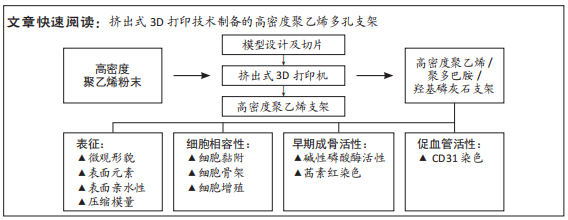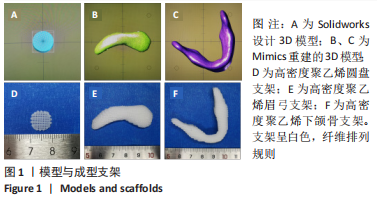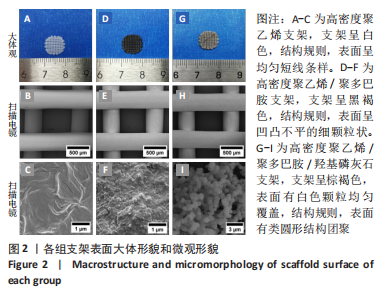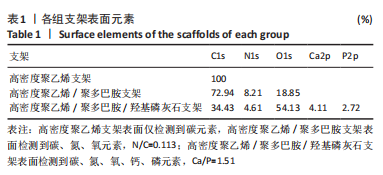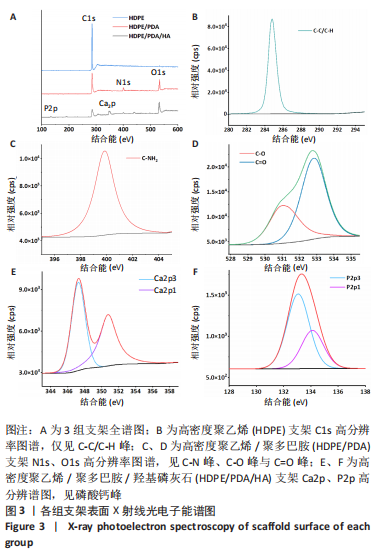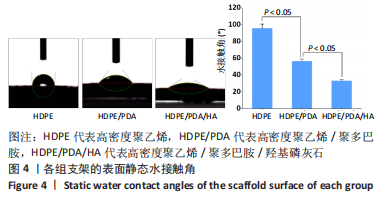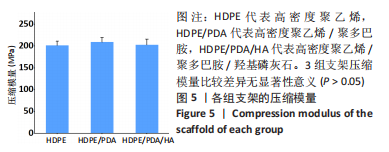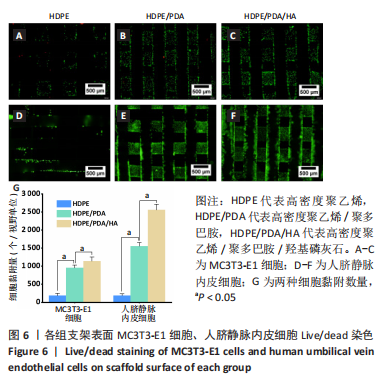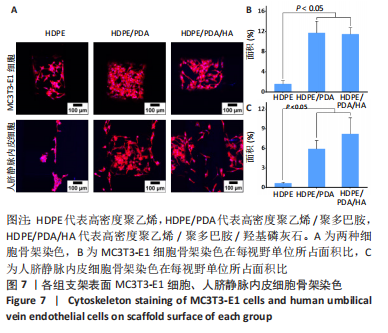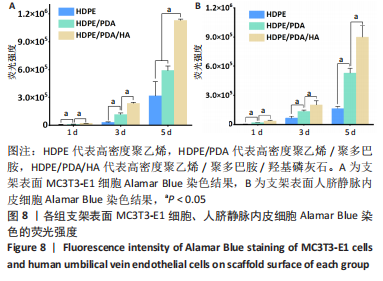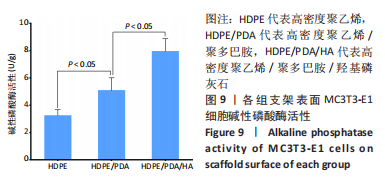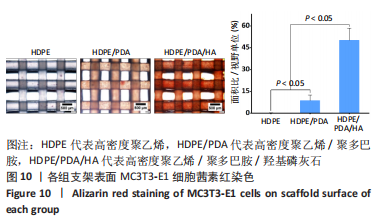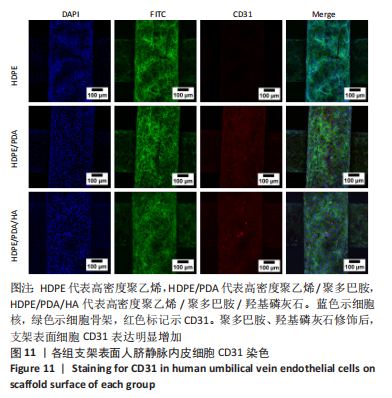[1] POURLAK T, POURLAK T, GHODRATI M, et al. Usage of stem cells in oral and maxillofacial region. J Stomatol Oral Maxillofac Surg. 2021;122(4): 441-452.
[2] CRIST TE, MATHEW PJ, PLOTSKER EL, et al. Biomaterials in Craniomaxillofacial Reconstruction: Past, Present, and Future. J Craniofac Surg. 2021;32(2):535-540.
[3] 黄燕,李小丹,欧阳山蓓,等.自体骨、生物材料在颅颌面骨缺损修复中的应用研究[J].中国美容医学,2017,26(8):89-92.
[4] IACCARINO C, KOLIAS A, ADELSON PD, et al. Consensus statement from the international consensus meeting on post-traumatic cranioplasty. Acta Neurochir (Wien). 2021;163(2):423-440.
[5] 谢知洋,吴国平.聚醚醚酮修复颅颌面骨缺损的应用进展[J].中华医学美学美容杂志,2021,27(6):505-508.
[6] PARK H, RYU J, JUNG S, et al. Effect of Hydroxyapatite Nanoparticles and Nitrogen Plasma Treatment on Osteoblast Biological Behaviors of 3D-Printed HDPE Scaffold for Bone Tissue Regeneration Applications Materials (Basel). 2022;15(3):827.
[7] SOSAKUL T, TUCHPRAMUK P, SUVANNAPRUK W, et al. Evaluation of tissue ingrowth and reaction of a porous polyethylene block as an onlay bone graft in rabbit posterior mandible. J Periodontal Implant Sci. 2020;50(2):106-120.
[8] SLEPICKA P, SLEPICKOVA KASALKOVA N, STRANSKA E, et al. Surface characterization of plasma treated polymers for applications as biocompatible carriers. Exp Polym Lett. 2013;7(6):535-545.
[9] MARLIER B, KLEIBER JC, BANNWARTH M, et al. Reconstruction of cranioplasty using medpor porouspolyethylene implant. Neurochirurgie. 2017;63(6):468-472.
[10] CHENG L, SURESH KS, HE H, et al. 3D Printing of Micro- and Nanoscale Bone Substitutes: A Review on Technical and Translational Perspectives. Int J Nanomedicine. 2021;16:4289-4319.
[11] PAXTON NC, DINORO J, REN J, et al. Additive manufacturing enables personalised porous high-density polyethylene surgical implant manufacturing with improved tissue and vascular ingrowth. Appl Mater Today. 2021;22:100965.
[12] YIN J, ZHONG J, WANG J, et al. 3D-printed high-density polyethylene scaffolds with bioactive and antibacterial layer-by-layer modification for auricle reconstruction. Mater Today Bio. 2022;16:100361.
[13] FENG C, XUE J, YU X, et al. Co-inspired hydroxyapatite-based scaffolds for vascularized bone regeneration. Acta Biomater. 2021;119: 419-431.
[14] KOKUBO T, TAKADAMA H. How useful is SBF in predicting in vivo bone bioactivity? Biomaterials. 2006;27(15):2907-2915.
[15] 刘吕花,郑延延,张丽芳,等.硬组织植入聚醚醚酮表面生物活性改性研究[J].中国塑料,2018,32(11):7-18.
[16] LEE H, DELLATORE SM, MILLER WM, et al. Mussel-inspired surface chemistry for multifunctional coatings. Science. 2007;318(5849): 426-430.
[17] RYU J, KU SH, LEE H, et al. Mussel-Inspired Polydopamine Coating as a Universal Route to Hydroxyapatite Crystallization. Adv Functl Mater. 2010;20(13): 2132-2139.
[18] NIECHAJEV I. Facial reconstruction using porous high-density polyethylene (medpor): long-term results. Aesthetic Plast Surg. 2012; 36(4):917-927.
[19] MARLIER B, KLEIBER JC, BANNWARTH M, et al. Reconstruction of cranioplasty using medpor porouspolyethylene implant. Neurochirurgie. 2017;63(6):468-472.
[20] SPÄTER T, TOBIAS AL, MENGER MM, et al. Biological coating with platelet-rich plasma and adipose tissue-derived microvascular fragments improves the vascularization, biocompatibility and tissue incorporation of porous polyethylene. Acta Biomater. 2020;108:194-206.
[21] WANG Z, WANG L, LI T, et al. 3D bioprinting in cardiac tissue engineering. Theranostics. 2021;11(16):7948-7969.
[22] LIU X, CHEN W, SHAO B, et al. Mussel patterned with 4D biodegrading elastomer durably recruits regenerative macrophages to promote regeneration of craniofacial bone. Biomaterials. 2021;276:120998.
[23] XING F, CHI Z, YANG R, et al. Chitin-hydroxyapatite-collagen composite scaffolds for bone regeneration. Int J Biol Macromol. 2021;184:170-180.
[24] LI L, LI Y, YANG L, et al. Polydopamine coating promotes early osteogenesis in 3D printing porous Ti6Al4V scaffolds. Ann Transl Med. 2019;7(11):240.
[25] KARAGEORGIOU V, KAPLAN D. Porosity of 3D biomaterial scaffolds and osteogenesis. Biomaterials. 2005;26(27):5474-5491.
[26] MIRKHALAF M, MEN Y, WANG R, et al. Personalized 3D printed bone scaffolds: a review. Acta Biomater. 2022:S1742-7061(22)00218-5. doi: 10.1016/j.actbio.2022.04.014..
[27] LASCHKE MW, AUGUSTIN VA, SAHIN F, et al. Surface modification by plasma etching impairs early vascularization and tissue incorporation of porous polyethylene (Medpor®) implants. J Biomed Mater Res B Appl Biomater. 2016;104(8):1738-1748.
[28] 汪洋,东为富.黑色素的结构、性质及其在纳米复合材料领域的应用[J].中国材料进展,2019,38(5):470-477.
[29] 彭浩南,李红.聚多巴胺的发现、反应原理及应用[J].大学化学, 2022,37(X):2202011.
[30] 何林,吴稀,何淞,等.经聚多巴胺涂层的羟基磷灰石生物陶瓷具有亲水性与细胞黏附性[J].中国组织工程研究,2021,25(22): 3540-3544.
[31] 林子扬,常宇辰,吴章凡,等.不同模拟体液对硼硅酸盐生物活性玻璃基骨水泥矿化性能的影响[J]. 无机材料学报,2021,36(7):745-752.
[32] NAOFUMI O, YUKO K, TSUBASA O. Antibacterial effect of zinc oxide/hydroxyapatite coatings prepared by chemical solution deposition. Appl Surf Sci. 2018;445:596-600.
[33] 施兰,杨立军,代文豪,等.沉积温度对多孔钛表面仿生制备羟基磷灰石的影响[J].材料科学与工艺,2017,25(6):27-33.
[34] 李元,宋亮,张建国,等.三维有限元分析种植体支持平面型及弹性衬垫型磁性覆盖义齿在正常骨及骨质疏松状态下的应力[J].中国组织工程研究,2022,26(16):2540-2544.
[35] GRIFFIN MF, O’TOOLE G, SABBAGH W, et al. Comparison of the compressive mechanical properties of auricular and costal cartilage from patients with microtia. J Biomech. 2020;103:109688.
[36] LIU G, WANG Q, YANG Q, et al. Mechanical study of polyurethane elastomer and Medpor as the material of artificial auricular scaffold. Zhongguo Xiu Fu Chong Jian Wai Ke Za Zhi. 2019;33(4):492-496.
[37] BOBBERT F, ZADPOOR AA. Effects of bone substitute architecture and surface properties on cell response, angiogenesis, and structure of new bone. J Mater Chem B. 2017;5(31):6175-6192.
[38] ZAREIDOOST A, YOUSEFPOUR M, GHASEME B, et al. The relationship of surface roughness and cell response of chemical surface modification of titanium. J Mater Sci Mater Med. 2012;23(6):1479-1488.
[39] AL QW, SCHILLE C, SPINTZYK S, et al. Effect of surface modification of zirconia on cell adhesion, metabolic activity and proliferation of human osteoblasts. Biomed Tech (Berl). 2017;62(1):75-87.
[40] HARB SV, BASSOUS NJ, DE SOUZA TAC, et al. Hydroxyapatite and β-TCP modified PMMA-TiO 2 and PMMA-ZrO2 coatings for bioactive corrosion protection of Ti6Al4V implants. Mater Sci Eng C Mater Biol Appl. 2020;116:111149.
[41] LIU X, CAO J, LI H, et al. Mussel-inspired polydopamine: a biocompatible and ultrastable coating for nanoparticles in vivo. ACS Nano. 2013;7(10):9384-9395.
[42] LEE DJ, TSENG HC, WONG SW, et al. Dopaminergic effects on in vitro osteogenesis. Bone Res. 2015;3:15020.
[43] WANG H, LIN C, ZHANG X, et al. Mussel-Inspired Polydopamine Coating: A General Strategy To Enhance Osteogenic Differentiation and Osseointegration for Diverse Implants. ACS Appl Mater Interfaces. 2019;11(7):7615-7625.
[44] HOU Y, XIE W, YU L, et al. Surface Roughness Gradients Reveal Topography-Specific Mechanosensitive Responses in Human Mesenchymal Stem Cells. Small. 2020;16(10):e1905422.
[45] PIARD C, LUTHCKE R, KAMALITDINOV T, et al. Sustained delivery of vascular endothelial growth factor from mesoporous calcium-deficient hydroxyapatite microparticles promotes in vitro angiogenesis and osteogenesis. J Biomed Mater Res A. 2021;109(7):1080-1087. |
